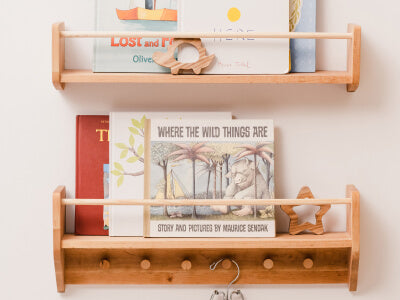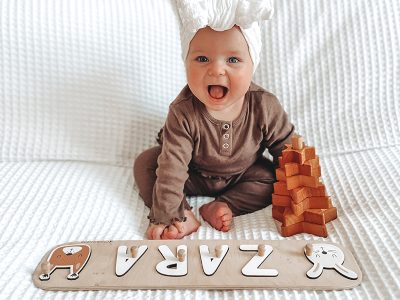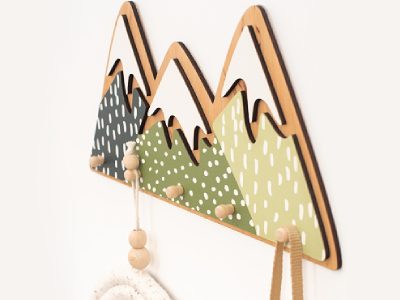How to Encourage Creative Play in Babies and Toddlers
- • 3 min read

Photo by Ivan Samkov from Pexels
- Tips for Creative Play for Babies (0-12 months)
- Creativity Boost for Toddlers (12-24 months)
- Toddler Creative Activities (24-36 months)
- Tips to Get Preschoolers Creative (3-5 years)
- Why’s Creative Play Useful?
At Child-Universe, many of us have already become parents. So, we know that creativity is something that can’t be driven in the frame. It comes in a variety of shapes, sizes, forms, and guises. From finger painting and storytelling to music and dances – creative play for kids has no limits! If you wonder how to encourage creativity in a child, we have some recommendations for encouraging our kiddos’ innate desire to openly express themselves. Here we go.
Tips for Creative Play for Babies (0-12 months)
At the age of 0-12 months, pumpkins are busy with exploring the world around them. They trust their senses as they learn about every inch of their environment. That is why we recommend choosing sensory play as the main activity to cultivate creativity. In general, art activities for infants 0-12 months old include:
- Sounds and music. Music is one of the most amazing and powerful tools in the world. Make sure to expose your child to various types of sounds and music. Even the most primitive instruments, like drums and rattles, can help little melomaniacs understand cause and effect. At the same time, it’s a great chance to nurture children’s auditory development.
- Sensory experiences. Let them explore items and toys that have different shapes, textures, colors, and levels of softness. The exploration of sensory balls, soft fabrics, and rattles is perfect when it comes to stimulating the tot’s senses.
- Peek-a-boo! Time-tested activity has different variations. For example, you can cover your face with your hands and say, “Where is the baby?” Uncover your face and gladly say, “Here is the baby!” The game has an element of surprise and expectation while teaching babies about object performance. In other words, you let your tot know that items still exist even when they don’t see them.
- Tummy exploration. During tummy time, make sure to place various toys so that the little one can easily reach them. Thus, you will encourage them to reach for each to grasp them and explore.
Creativity Boost for Toddlers (12-24 months)
The researchers behind the “Age-Appropriate Adaptation of Creativity Tasks for Infants Aged 12-24 Months” state that creativity plays a crucial role in early learning and cognitive development. At this age, littlies get ‘curiouser and curiouser’. At the same time, they’re more mobile and engaged in exploratory play. Through trial and error, they learn more about the world they live in and learn to solve mini-problems along the way. Happy moms and dads notice babies grow into fidget toddlers so that the following activities will fit:
- Art activities for babies 0-2 years. Shop for washable and safe crayons and paper to encourage your little Dali for early creative art activities for infants. They will express themselves while you will have a collection of masterpieces to adorn the fridge.
- Building blocks. Stacking toys or blocks rock at this age! The best in the category is Montessori baby toys. Not only do they help develop hand-eye coordination and motor skills, but they also boost imagination and creativity.
- Imitative play. If you wonder how to foster creativity in toddlers, start with yourself. You can become an excellent example for the next generation! They love to mimic us – adults. So make sure to provide them with an arsenal of tools: toy phones, food and kitchen sets, and other elements of a successful make-believe to let them imitate your routine in the middle of imaginative play.
- Outdoor tours. When you take them out for a play under the sun, they have a chance to explore new environments, from picking up stones to enjoying all-around good vibes of sun rays. After all, nature has been the best source of play and knowledge for centuries.
Toddler Creative Activities (24-36 months)
According to the “The Effects of Play on The Creativity of Young Children” research, productivity and creativity are very closely associated. Since kids at this age develop more complex thinking skills, you can kill two birds with one stone. Parents have a chance to engage tots in more complex creative play that encourages goal-setting and stimulates meaningful engagement.
- Art and craft activities. There’s no need to take them to the art school! You can do it in a simpler way by introducing craft and art activities like collages, finger painting, gluing, etc. Encouraging creativity in preschoolers comes easier because they have their own preferences and interests and can follow simple instructions by now. This means you’ll effortlessly choose activities that foster creativity and boost fine motor skills.
- Pretend dress-up play. How to develop creativity in early childhood and give them a good fashion taste? Provide them with outfits that allow rug rats to pretend to be whoever they want to be. Not only does it encourage imagination, but it also helps them develop strong social skills that will serve them in adulthood.
- Building. Let your children manage various building materials like child-safe, eco-friendly, and age-appropriate construction and building sets. In the process, they learn about things like balance, gravity, and aesthetics. It helps them let their creative forces run at full power and hone problem-solving skills.
- Interactive storytelling. At the ChildUniverse blog, we have already talked about how to get a child interested in reading, and this is the best time to cultivate a love for this wonderful pastime. Puppets and plush toys will help turn your next storytelling session into a real performance with open-ended questions and your kiddo imagining what will happen next to the main characters.
Tips to Get Preschoolers Creative (3-5 years)
To help children grow into well-rounded, curious, and confident individuals, encourage creative play and make it an integral part of the routine. At this age, their imagination is rich, while language skills and social awareness are more developed. Here are some creative development activities for preschoolers to allow them to show their creative side.
- Nature exploration and science. Some primitive science experiments, work in the garden, or outdoor walks are enough to spark curiosity and creativity. You will see them asking tons of questions while making priceless observations about the world around them.
- Music and dance. Let them choose what they would like to be engaged in, be it dancing, singing, or playing instruments. They’ll express themselves through movement and develop coordination, rhythm, love for music, and…simply have fun.
- Building and puzzling. All the construction toys will do – building blocks, puzzles, LEGO, etc. They require problem-solving skills that preschoolers use to the fullest extent, and they promote critical thinking and creativity, which can be seen in every structure your kid creates.
- Cooking. The kitchen is a creative space, and baking is one of the opportunities to showcase your inner talents. Involve your master chief in stirring, measuring ingredients, and decorating to not only teach them about math but also let their wildest creative ideas become reality.
Why’s Creative Play Useful?

Photo by Artem Podrez from Pexels
From everything mentioned above, you can see that creative play comes with a bag of benefits. We mentioned them below:
- Social. Just like any other play, the creative process enables little participants to develop and hone social skills. They interact and communicate with other members of the group (if they don’t play alone) and learn to work in a team, share, and play fairly. In other words, tots get a better idea of what adulthood is and its key elements – gratitude, kindness, respect, etc.
- Physical. A lot of crafts and arts help kiddos develop hand-eye coordination, support muscles, and hone fine motor skills. Activities like cutting, painting, and drawing include many useful movements that promote a healthy body.
- Cognitive. While taking their creativity to the next level, young ones also learn to logically process information, plan, solve problems, and learn through their senses. They explore the world of textures, colors, forms, shapes, patterns, etc.
Communication. The reality is that communication doesn’t include actual speaking only. Through creative play, children also learn to communicate by expressing their feelings, thoughts, and ideas as they are engaged in creating art.
























